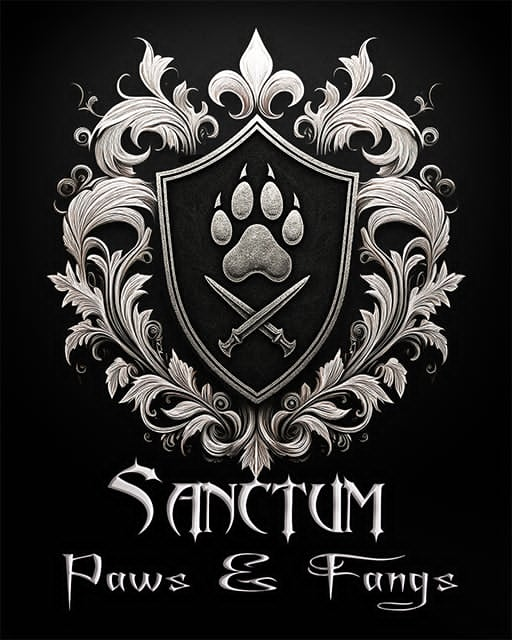Bright red kibble. Neon green biscuits. Rainbow-colored chews. They may look fun — but beneath the surface, these artificial dyes are doing far more harm than good. At Sanctum Paws & Fangs, we believe color should come from nature, not petroleum. This guide exposes the truth about synthetic dyes in pet food, why they’re banned in other countries, and how you can protect your dog from unnecessary risks.
🧪 What Are Artificial Dyes?
Artificial dyes are synthetic colorants used to make pet food look more appealing — not to dogs, but to humans. Common dyes include:
-
Red 40
-
Yellow 5
-
Yellow 6
-
Blue 2
-
Caramel Color
-
Iron Oxides (aka rust)
These dyes are often derived from petroleum or coal tar, and while they’re FDA-approved in small doses, they’ve been linked to serious health concerns.
⚠️ Why Are They Dangerous?
Studies have shown that artificial dyes may cause:
-
Hyperactivity and behavioral changes
-
Allergic reactions and skin irritation
-
Digestive upset
-
Thyroid tumors and cancer risks (especially Red 3 and Yellow 6)
-
Lung inflammation from inhaled iron oxides
Many of these dyes are banned or restricted in countries like the UK, Norway, and Austria — yet still used in U.S. pet products.
🧭 Why Are They Still Used?
-
Marketing: Bright colors make food look “fresh” or “meaty” to shoppers
-
Cost: Synthetic dyes are cheaper than natural alternatives
-
Shelf Appeal: Brands use color to mimic real ingredients (e.g., red for beef, green for veggies)
But dogs don’t care about color — they care about taste, smell, and nutrition.
🛑 Worst Offenders — Brands & Products That Still Use Dyes
Here are some popular brands and treats that have been flagged for using artificial dyes like Red 40, Yellow 5, and Blue 2:
|
Brand/Product |
Dyes Used |
|---|---|
|
Pedigree (Dry & Dentastix) |
Red 40, Yellow 5, Blue 2 |
|
Purina Beneful |
Red 40, Yellow 6 |
|
Milk-Bone Biscuits |
Yellow 5, Red 40 |
|
Pup-Peroni Treats |
Red 40, BHA |
|
Gravy Train |
Red 40, Yellow 6 |
|
Ol’ Roy |
Red 40, Yellow 5 |
|
Kibbles ‘n Bits |
Red 40, Yellow 6 |
|
Alpo Variety Snaps |
Red 40, Yellow 5 |
|
Canine Carry Outs |
Red 40, Corn Syrup |
|
Pedigree Marrobone Treats |
Yellow 6, BHA |
✅ Safer Alternatives — Dye-Free & Naturally Colored Brands
These brands prioritize natural colorants like beetroot, turmeric, spirulina, and blueberries:
|
Brand |
Color Source / Notes |
|---|---|
|
Open Farm |
No dyes; traceable ingredients |
|
Spot & Tango (UnKibble) |
Human-grade, no artificial colors |
|
Sundays for Dogs |
Air-dried, naturally colored |
|
The Honest Kitchen |
Dehydrated whole foods |
|
Ziwi Peak |
Air-dried, no additives |
|
Bocce’s Bakery |
Natural colors from fruits/spices |
|
Saint Rocco’s Treats |
No dyes; artisan-baked |
|
Dr. Harvey’s |
Freeze-dried, dye-free |
|
Nulo Freestyle |
No artificial colors or flavors |
|
Natural Balance L.I.D. |
Limited ingredients, no dyes |
🌿 Natural Colorants That Nourish
Instead of synthetic dyes, look for treats colored with:
-
Beetroot powder (pink/purple)
-
Turmeric (yellow)
-
Spirulina (green/blue)
-
Blueberries (blue/purple)
-
Carob (brown, chocolate-like but safe)
These ingredients not only add color — they offer antioxidants, anti-inflammatory benefits, and digestive support.
🐾 SPF’s Position
At Sanctum Paws & Fangs, we believe:
-
Color should come from nature, not chemicals
-
Transparency matters — no vague “added color” or “natural flavor”
-
Health > aesthetics — we curate treats that nourish, not deceive
Every product we carry is vetted for ingredient integrity, dye-free formulation, and ethical sourcing. Because Ethan’s transformation isn’t just a story — it’s our mission.
👑 Final Thoughts
Artificial dyes are a marketing illusion — and your dog deserves better. By choosing dye-free, whole-food treats, you’re not just feeding your pet — you’re protecting their future.
Let’s make every bowl a sanctuary of truth.









